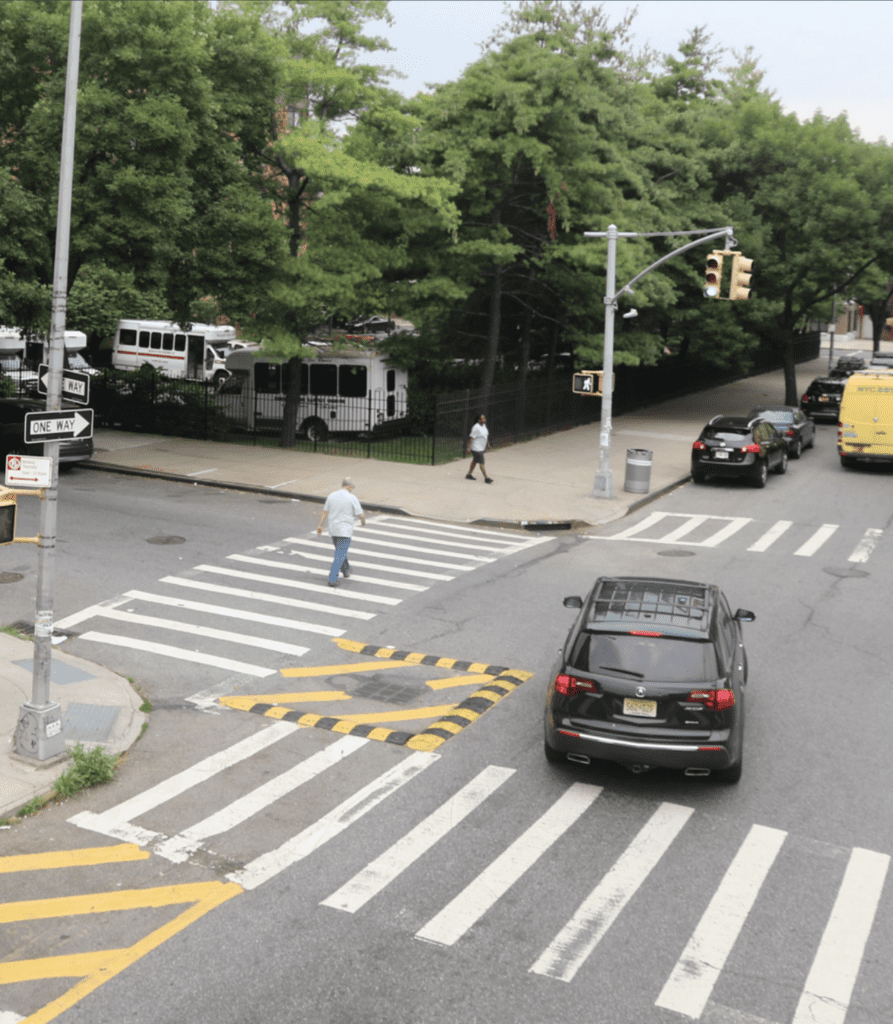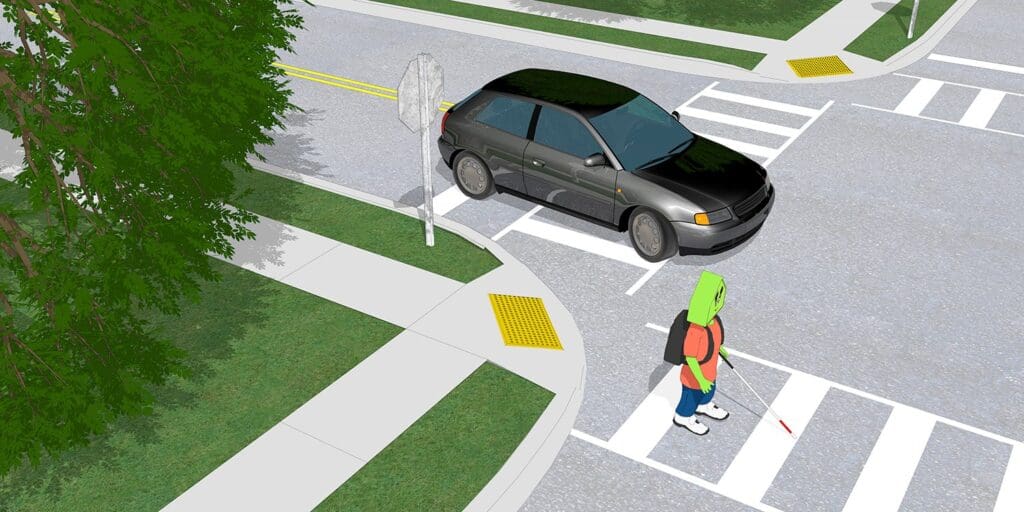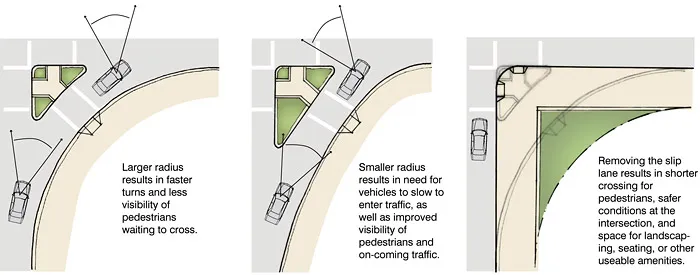Part 4 of our series on Building Safer Streets

By Ruth Rosas, Mike McGinn, Ian Thomas
Speed matters, and it particularly matters at intersections where vehicles and pedestrians interact. We want to let you in on a design feature that really matters. Once you see it, you can’t unsee it. And you’ll be amazed/dismayed to see how often corners are designed for speed, not safety, and how it can be fixed.
The connection between corner radii and speed
All street corners depend on a design parameter called the “corner radius,” which is the curvature of the corner. The corner radius plays a crucial role in determining the safety of an intersection. Sharp corners have small or tight corner radii. These corners require drivers to slow down to take a turn safely. On the other hand, wide corners have large corner radii and they encourage high speeds when turning.
In many cities and towns, to facilitate turning when driving, intersections have been designed to be wider than necessary. As illustrated in the image below, large corner radii allow vehicles to make a turn without reducing their speed. This creates unsafe conditions for pedestrians as drivers are less likely to yield to pedestrians and drivers have an increased stopping distance as described in our previous blog.

As illustrated in image below, smaller corner radii require drivers to slow down as they approach an intersection to turn. By slowing down, drivers maintain control of the vehicle and are able to assess pedestrians at a crosswalk, oncoming traffic, and other objects and obstacles as they are turning. If a driver does not slow down, the vehicle may hit the curb or objects near the corner.

Features of wide corner radii
While sharp corners reduce the crossing distance, wide corners create longer crosswalks. The length of the crosswalk can make it difficult for pedestrians to cross quickly and increase their exposure to traffic, including vehicles that are turning. Sharp corners allow for pedestrians, especially older adults, children, or people with disabilities, to cross safely and to ensure they are visible to drivers.
A particularly egregious version of the big radius is the “slip lane” which allows a driver to maintain speeds while avoiding a traffic signal. It is particularly dangerous for pedestrians to cross the unsignalized slip lane given that drivers are maintaining a relatively high speed, and probably looking to the street ahead to time their merge with traffic. The safe and appropriate solution where pedestrians are present is to “square off” the intersection as shown below.

Safety for everyone
Near industrial areas or on designated truck routes, pedestrians may find much wider corners to accommodate for large trucks.1 At times, these designated truck routes go through residential communities, largely in poor communities of color2, creating unsafe walking conditions in these neighborhoods.
So next time you are talking to a city official, or better yet, the traffic planner/engineer in charge of the street – ask them if they can do something about the corner radius. Or point out the dangers of the slip lane and ask them to close it. Wide radii and slip lanes are examples of design choices that prioritize vehicle speed over the safety of people, inside or outside of cars. Simple infrastructure changes like the ones described above can make a big difference for safety.
Let us know what you think, and feel free to share ideas for further installments.